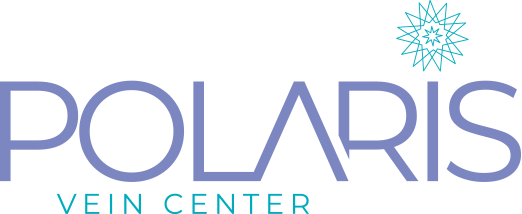Vein Treatment Columbus Ohio

Varicose Veins: Causes, Symptoms & Treatments
Venous insufficiency can occur at any time for both men and women. Some people are initially concerned with the unsightly appearance of varicose veins, especially when the weather gets warmer and bare legs make their appearance. Others may experience leg pain or discomfort as a result of varicose veins. If you think you may have varicose veins, here’s some information on the causes, symptoms, and treatment options available. Please keep in mind, it’s important to see a vein doctor for an accurate assessment.
What are Varicose Veins?
As part of the circulatory process, veins contain tiny valves that open and close to help move blood upwards, towards the heart. When the valves become damaged or stop working, blood flow becomes difficult, if not impossible, and blood gets stuck in the vein and builds up. The buildup of blood stretches and enlarges the vein, making it varicose.
Even though any vein can become varicose, they occur most often in the lower legs, ankles, and feet. Because of gravity, the lowest sections of the body require the hardest working valves. If people are inactive or overweight, or they sit or stand for long periods of time throughout the day, they are even more susceptible to getting varicose veins. Genetics and family history play major roles in the onset of varicose veins as well.
Varicose veins become problematic when they cause pain or discomfort. If left untreated, varicose veins may lead to other issues like ulcers, blood clots, and bleeding. Ulcers are caused by the increased pressure the built-up blood puts on the surrounding tissues. Blood clots, also known as thrombophlebitis, are caused by the stagnant blood flow that results from poorly functioning valves. Although uncommon, the stretched vein has a thinner wall and can rupture spontaneously, causing bruising or bleeding, especially if the vein is sitting close to the skin’s surface. The bleeding can be quite scary, causing many people to seek immediate medical attention.
Common Symptoms of Varicose Veins
Symptoms of varicose veins can be visual, physical, or both. The best way to find out if the symptoms you are experiencing are a result of venous insufficiency is to seek a professional’s help, A vein doctor can perform an ultrasound during your examination to observe blood flow in your veins and provide the information needed to make a proper diagnosis.
Veins that appear to be twisted or bulging, and may also be dark purple or blue.
An achy or heavy feeling in the legs.
Pain, swelling, itching, burning or cramping in the legs.
Bleeding veins, ulcers or skin inflammation.
Restless Legs Syndrome.


Radiofrequency Ablation
This is a minimally-invasive, non-surgical procedure in which a small catheter is inserted into the varicose vein to direct radiofrequency (RF) energy into the vein walls to make the affected vein seal itself shut. The body will reabsorb the damaged vein, redirecting blood flow to other healthy veins. The typical treatment time is between one and two hours. There is only mild discomfort, mostly related to the administration of the local anesthetic. Compression stockings must be worn for two weeks. Patients generally return to work the next day, staying active but refraining from strenuous cardiovascular activity.

ClariVein
ClariVein is the latest minimally invasive technique used to treat varicose veins. This procedure uses a technique called mechano-chemical ablation to non-surgically eliminate incompetent veins without the use of laser energy. A skinny wire is painlessly placed inside the vein. The wire rotates at a high speed that damages the intima combined with injection of liquid sclerotherapy to complete venous. The combination is a very efficient and painless way to seal the vein. This procedure is FDA-approved and is clinically proven to reduce symptoms of venous insufficiency such as spider veins and varicose veins.

VenaSeal™ Closure
The VenaSeal™ closure system requires no anesthetic, is virtually pain-free, and you don’t have to wear compression stockings afterward. Safe and effective, this procedure uses a medical adhesive to close the vein. Symptoms should improve immediately after the vein is closed, and a reduced recovery time means you can return to normal activities right away. This in-office procedure is perfect for people who want to get in, get out, and get on with their life without any downtime. Please note, this treatment is currently not covered by insurance other than Medicare.

Ambulatory Phlebectomy
Varicose veins that are large and close to the skin’s surface may require a procedure called ambulatory phlebectomy. After numbing the skin, an incision of about 1 mm in size is made and the diseased veins are extracted. This allows patients to heal more quickly and with less pain.
Patients must wear compression stockings for two weeks following the procedure to facilitate healing.

Sclerotherapy
Sclerotherapy is used to treat spider veins and varicose veins that occur most commonly on the legs. The process consists of a chemical solution, or sclerosant, that is injected into the vein through a tiny needle. The solution irritates the damaged vein, causing it to collapse. The body will then absorb the faulty vein, redirecting blood flow to other healthy veins.


